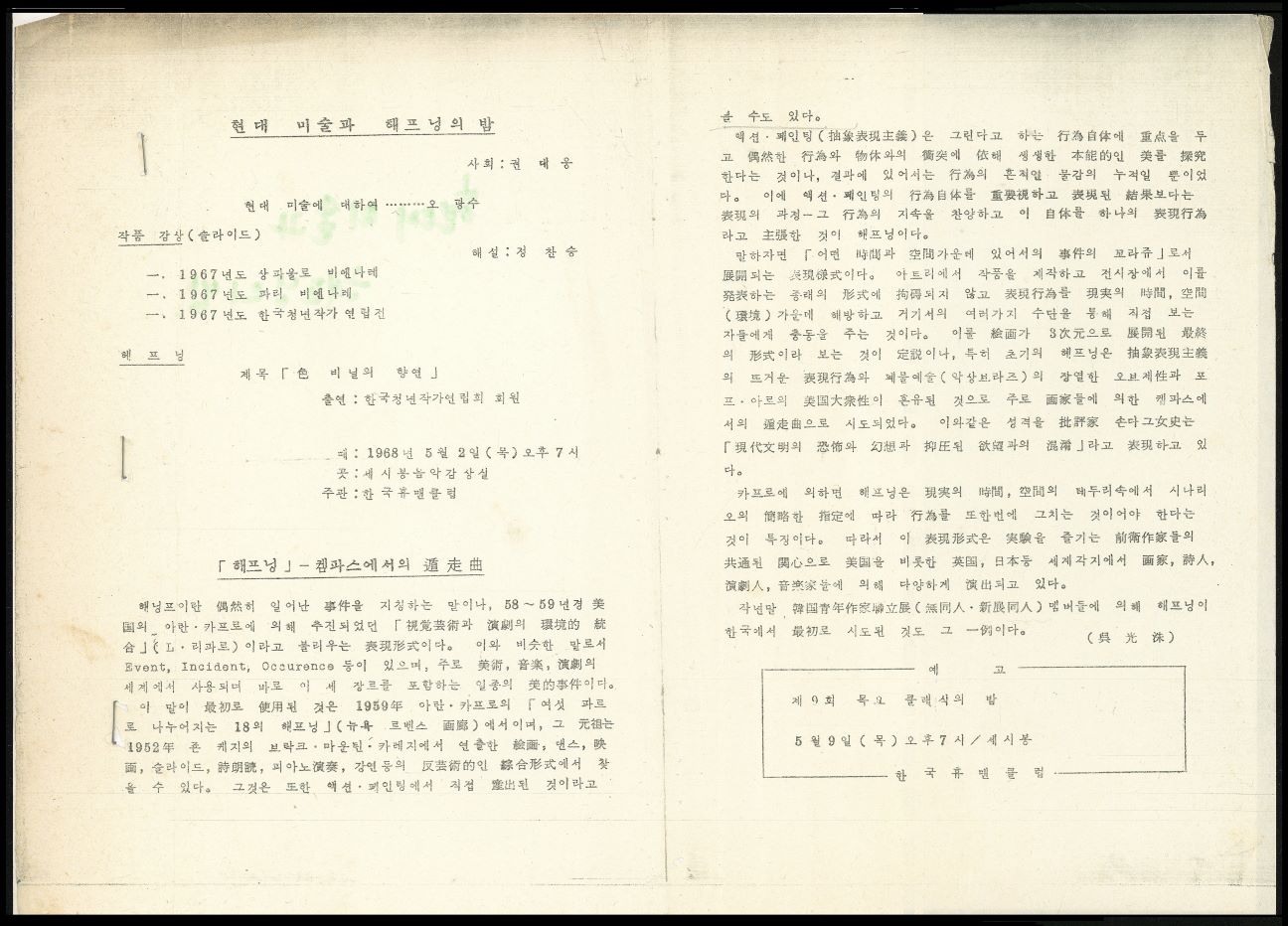
A Night of Contemporary Art and Happenings, Leaflet, May 2 1968, MMCA Art Research Center Collection, Gift of Hwang Yangja
A Night of Contemporary Art and Happenings
* Source: MMCA
Related
-

Zero Group
An experimental art group formed in 1962 by nine students in Seoul. The founding members were Kim Youngnam, Kim Youngja, Moon Bokcheol, Seok Ranhi, Lee Taehyun, Choi Boonghyun, and Hwang Ilji, who were painting majors in Hongik University; Seol Yeongjo, an architecture major at Hongik University; and Kim Sangyeong, a painting major at Seoul National University. The group disbanded following its second exhibition in 1967. Over its operation, the group drew attention from critics for its bold experimentation despite the repressive political and social atmosphere of 1960s South Korea.
-
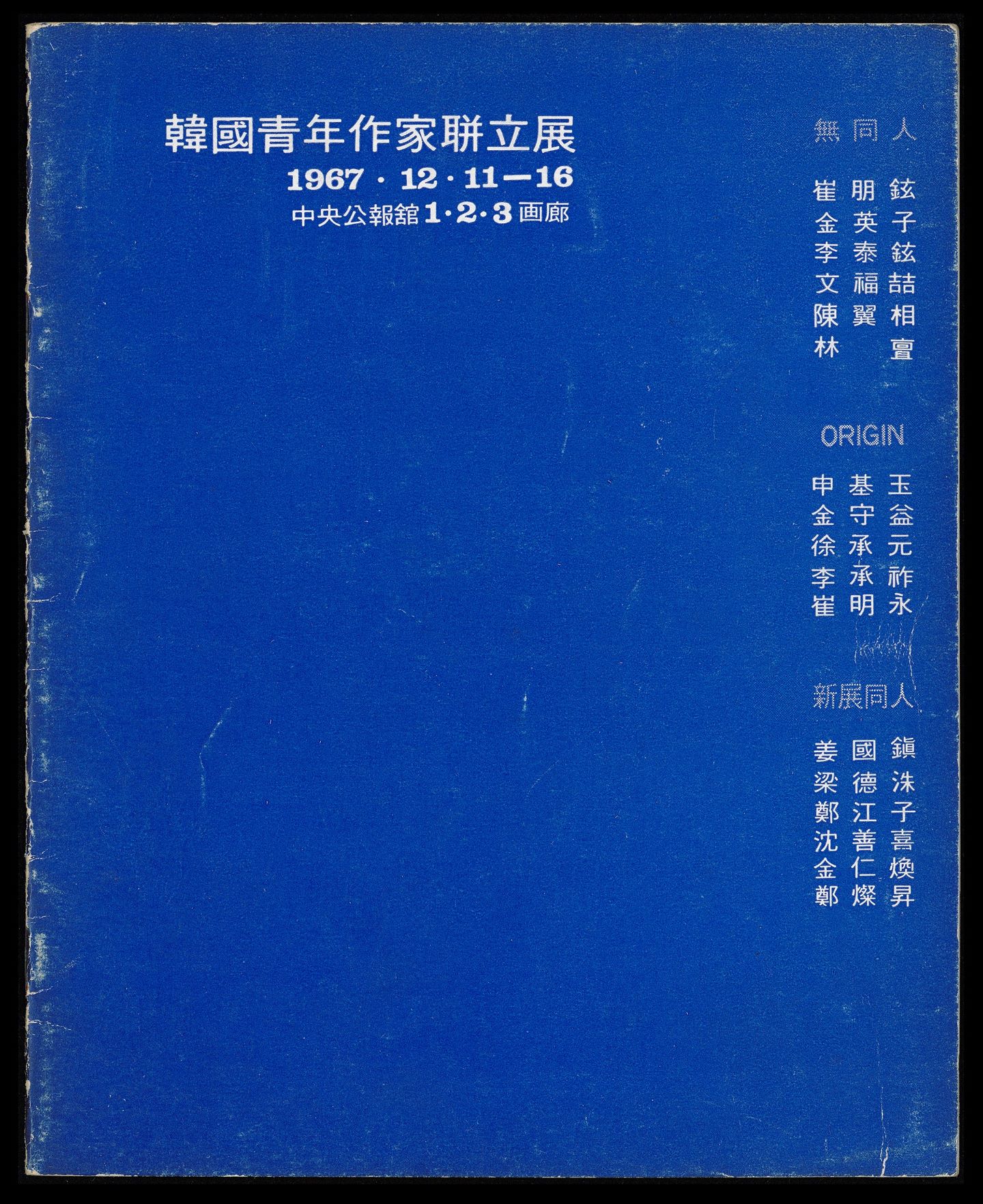
Sinjeon Group
An art organization formed in 1967 by alumni of Hongik University. Chung Chanseung and Kim Inwhan were previously members of Non Col, a group formed in 1962. Their work was characterized by Informel, but after Nonkkol disbanded due to differences in opinion within the membership, the two formed the Sinjeon Group alongside Kang Kukjin, Yang Deoksu, Shim Sunhee, and Jung Kangja, and they participated in the Union Exhibition of Korean Young Artists. The Sinjeon Group, in its departure from Informel, engaged in experimental work such as objet art, installations, and happenings.
-
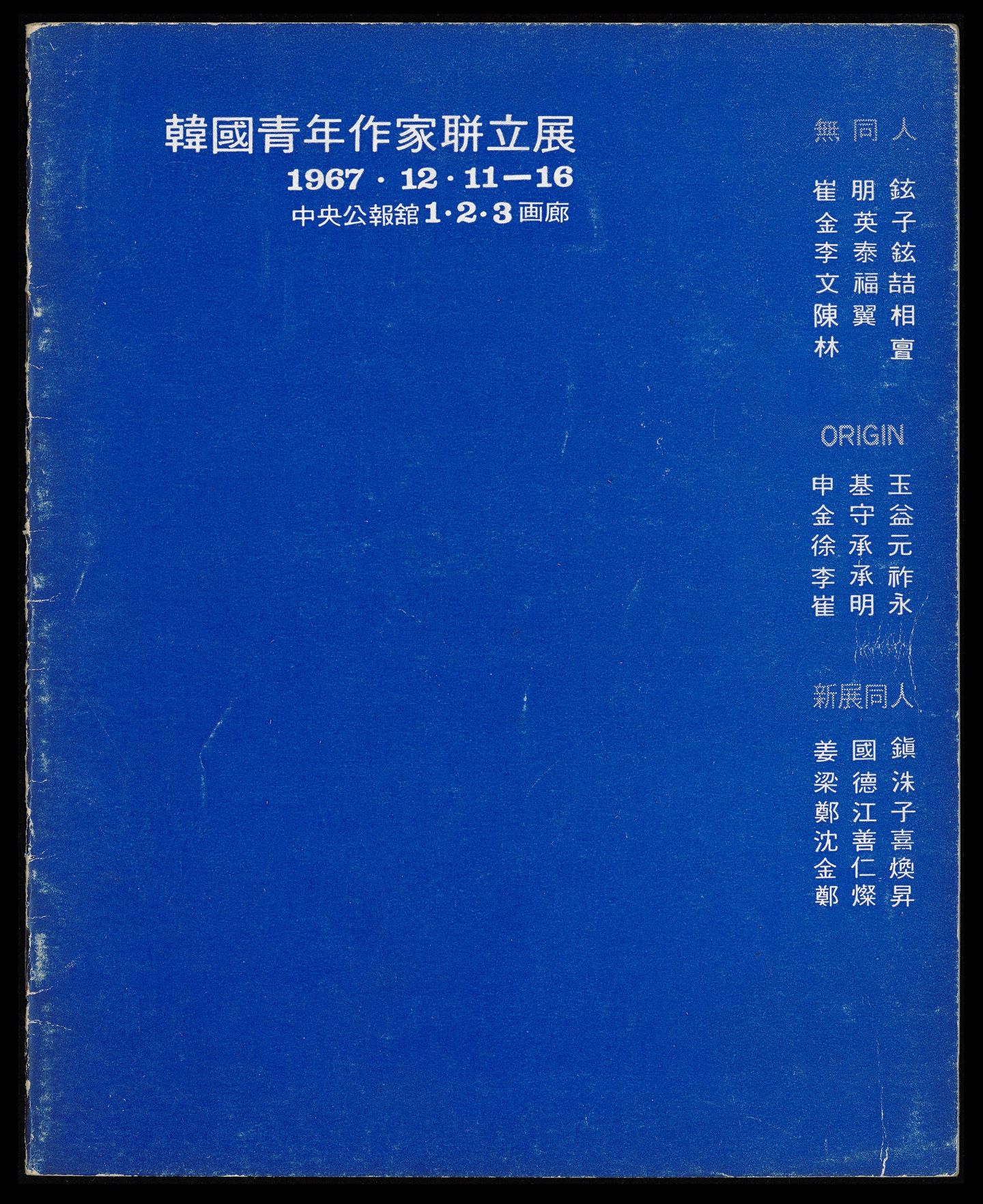
Union Exhibition of Korean Young Artists
The Union Exhibition of Korean Young Artists was an art show that members from Origin Fine Arts Association, Zero Group, and Sinjeon Group organized to be held at the Korean Information Service Gallery from December 11 to 17, 1967. By choosing to present works in what were the mainstream genres in Western art, such as pop art, op art, environmental art, happenings, and sculpture, the Exhibition helped to usher in a new era for Korean art after the dominance of the Informel group. Members from the three groups were mostly graduates from Hongik University. The manifesto they released stated: “Informel didn’t provide anything for last ten years. We are artists as activists who aim to create art after abstraction, art in everyday life, and public-friendly art.” This manifesto clearly expressed a desire to challenge the art world establishment, and the Coalition Exhibition is often considered as the beginning of a period of Korean “Experimental art (silheom misul),” which existed from the end of the 1960s to 1970s.
Find More
-
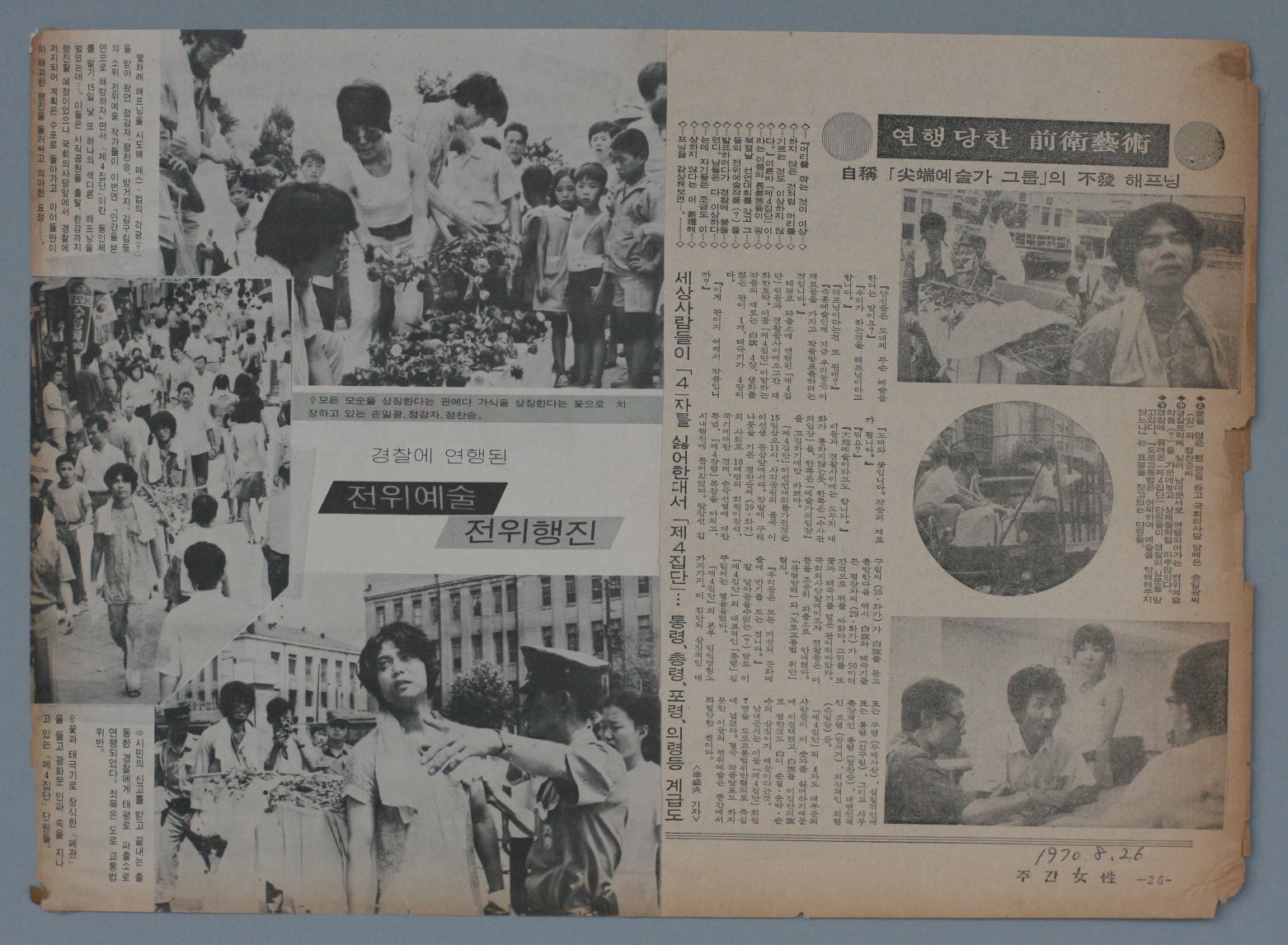
Funeral Ceremony of the Established Art and Culture
Funeral Ceremony of the Established Art and Culture is a happening performed by leading members of the total art collective The Fourth Group on August 15 in 1970 in downtown Seoul. After holding its founding ceremony on June 20 in 1970 at the Sorim Coffee Shop in Euljiro, Seoul, The Fourth Group performed the pantomime-style happening Street Theatre on July 1 in 1970 in Myeongdong. On the same day, Ko Ho, a theater actor from the Ejeotto Theater Company, and Chung Chanseung performed happenings at shop windows, on pedestrian overpasses, and in front of the National Theatre of Korea, criticizing capitalism for alienating contemporary people. However, they were arrested by the police for violating the Road Traffic Act. Nevertheless, the members of The Fourth Group were undeterred and staged another happening, Funeral Ceremony of the Established Art and Culture, on National Liberation Day. At 11 AM, Kim Kulim, Chung Chanseung, Bang Taesu, Son Ilgwang, Jung Kangja, and others gathered in front of the statue of Yi Yi in Sajik Park, paid their respects to patriotic martyrs, and then set off toward the Independence Gate while carrying a coffin covered with a white cloth and the Korean national flag Taegeukgi, over which flowers were placed. At fifty-meter intervals, Kim Kulim carrying a white flag symbolizing the intangible thought of The Fourth Group, marched in front, followed by Jung Kangja holding a white flag and Taegeukgi, Son Ilgwang and Yim Jungung carrying the coffin, and Chung Chanseung holding the Taegeukgi. In commemoration of the 25th anniversary of Korea’s liberation from Japan, they made their way under the First Hangang Bridge to criticize the world dominated by Japanese collaborators and oust cultural figures who had failed to depart from outdated ideas. They reached Gwanghwamun Gate and the National Assembly, where they were taken by the police and handed over to a summary trial. The charges against them were “obstructing traffic” and “violating road traffic laws.” Subsequently, on August 28, the government arrested hundreds of young people through a large-scale crackdown on long-haired people. Soon after, it announced, “a plan to eliminate the decadent social atmosphere” and named the artists of The Fourth Group as “degenerate artists, decadent practitioners, and criminals.” The members of The Fourth Group, who were promising avant-garde artists, were instantly labeled as outcasts, and this put an end to the history of happening performances. Funeral Ceremony of the Established Art and Culture proved to be a decisive factor in the dissolution of The Fourth Group.
-
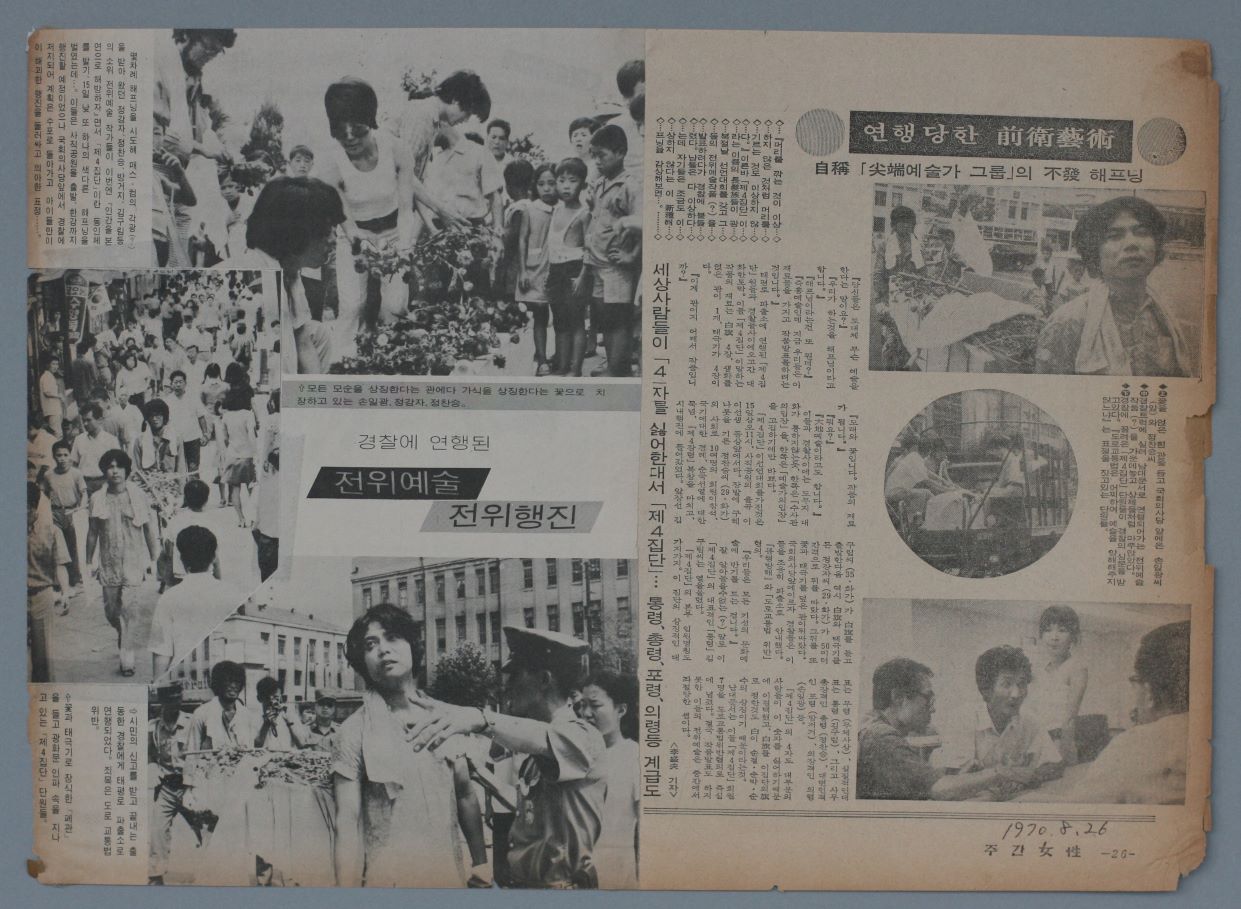
Intangible Art
Intangible art (muche yesul) is an art concept espoused by The Fourth Group, the avant-garde cultural organization in South Korea, formed in June 1970. The members of The Fourth Group, whose activities encompassed arts, press, popular culture, and religion, sought to create a total art that synthesized theater, art, dance, and literature. They hoped to revive a pure Korean culture and become a global cultural force. According to their creed, intangible art is derived from the core of Laozi’s philosophy, “the political idea of abandoning the will to dominate and being ruled by unconditioned nature.” In other words, the term “being intangible” means abandoning the Western way of thinking that separates the mind from the body, the unification of politics, economy, society, culture, and science into art, and returning all existing independent fields to a state of “nothingness” and making the boundaries of each field disappear. To materialize such a concept of being “intangible,” the members of The Fourth Group introduced the Western avant-garde art of the happening and internalized it into their intangible art, which, as its name implies, is art without form and art that leaves no results. The first solo exhibition of Jung Kangja, a member of The Fourth Group, which consisted exclusively of her happening, was also entitled Intangible (National Public Information Center, 1970). -

Funeral Ceremony of the Established Art and Culture
Funeral Ceremony of the Established Art and Culture is a happening performed by leading members of the total art collective The Fourth Group on August 15 in 1970 in downtown Seoul. After holding its founding ceremony on June 20 in 1970 at the Sorim Coffee Shop in Euljiro, Seoul, The Fourth Group performed the pantomime-style happening Street Theatre on July 1 in 1970 in Myeongdong. On the same day, Ko Ho, a theater actor from the Ejeotto Theater Company, and Chung Chanseung performed happenings at shop windows, on pedestrian overpasses, and in front of the National Theatre of Korea, criticizing capitalism for alienating contemporary people. However, they were arrested by the police for violating the Road Traffic Act. Nevertheless, the members of The Fourth Group were undeterred and staged another happening, Funeral Ceremony of the Established Art and Culture, on National Liberation Day. At 11 AM, Kim Kulim, Chung Chanseung, Bang Taesu, Son Ilgwang, Jung Kangja, and others gathered in front of the statue of Yi Yi in Sajik Park, paid their respects to patriotic martyrs, and then set off toward the Independence Gate while carrying a coffin covered with a white cloth and the Korean national flag Taegeukgi, over which flowers were placed. At fifty-meter intervals, Kim Kulim carrying a white flag symbolizing the intangible thought of The Fourth Group, marched in front, followed by Jung Kangja holding a white flag and Taegeukgi, Son Ilgwang and Yim Jungung carrying the coffin, and Chung Chanseung holding the Taegeukgi. In commemoration of the 25th anniversary of Korea’s liberation from Japan, they made their way under the First Hangang Bridge to criticize the world dominated by Japanese collaborators and oust cultural figures who had failed to depart from outdated ideas. They reached Gwanghwamun Gate and the National Assembly, where they were taken by the police and handed over to a summary trial. The charges against them were “obstructing traffic” and “violating road traffic laws.” Subsequently, on August 28, the government arrested hundreds of young people through a large-scale crackdown on long-haired people. Soon after, it announced, “a plan to eliminate the decadent social atmosphere” and named the artists of The Fourth Group as “degenerate artists, decadent practitioners, and criminals.” The members of The Fourth Group, who were promising avant-garde artists, were instantly labeled as outcasts, and this put an end to the history of happening performances. Funeral Ceremony of the Established Art and Culture proved to be a decisive factor in the dissolution of The Fourth Group.






